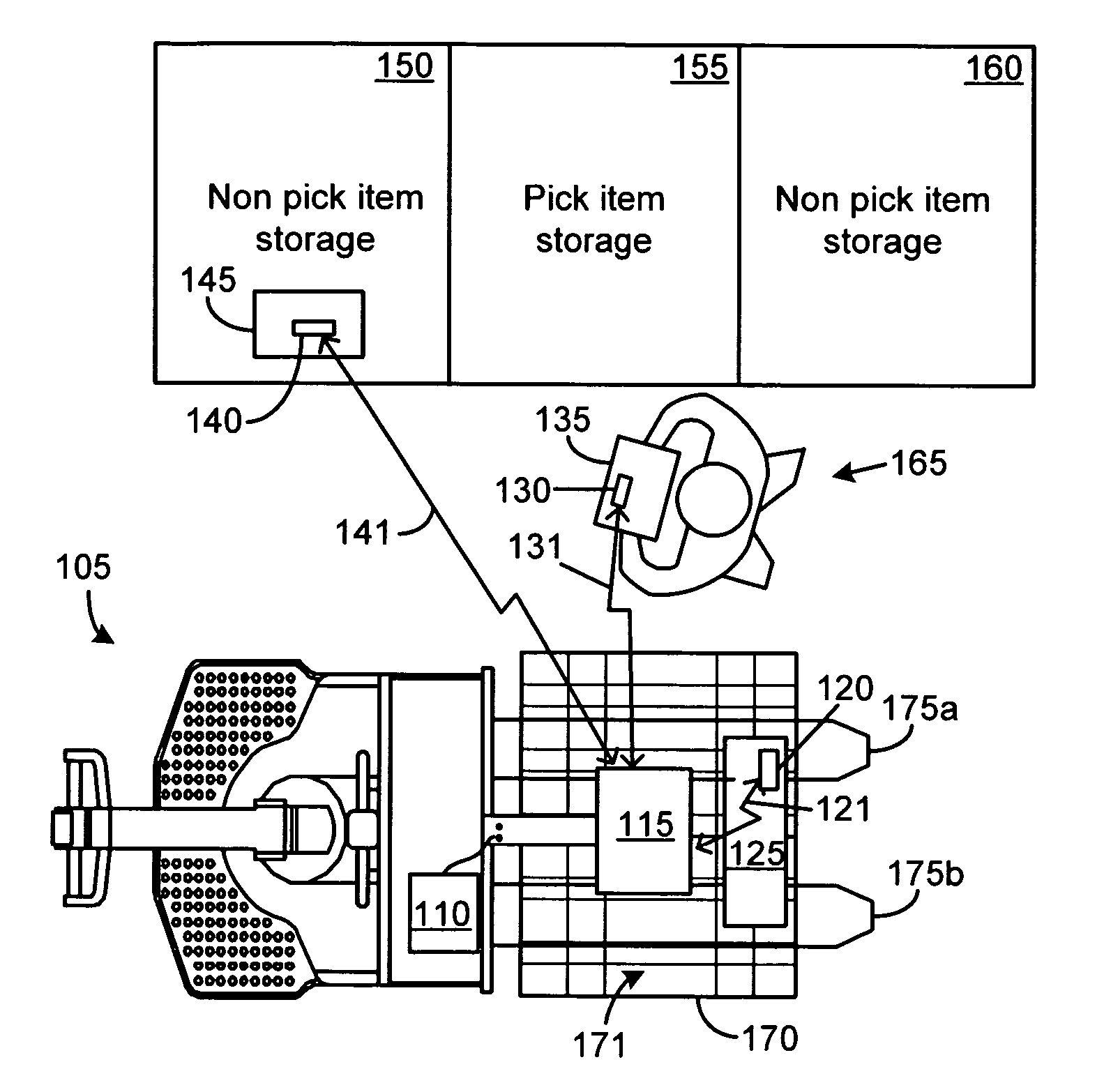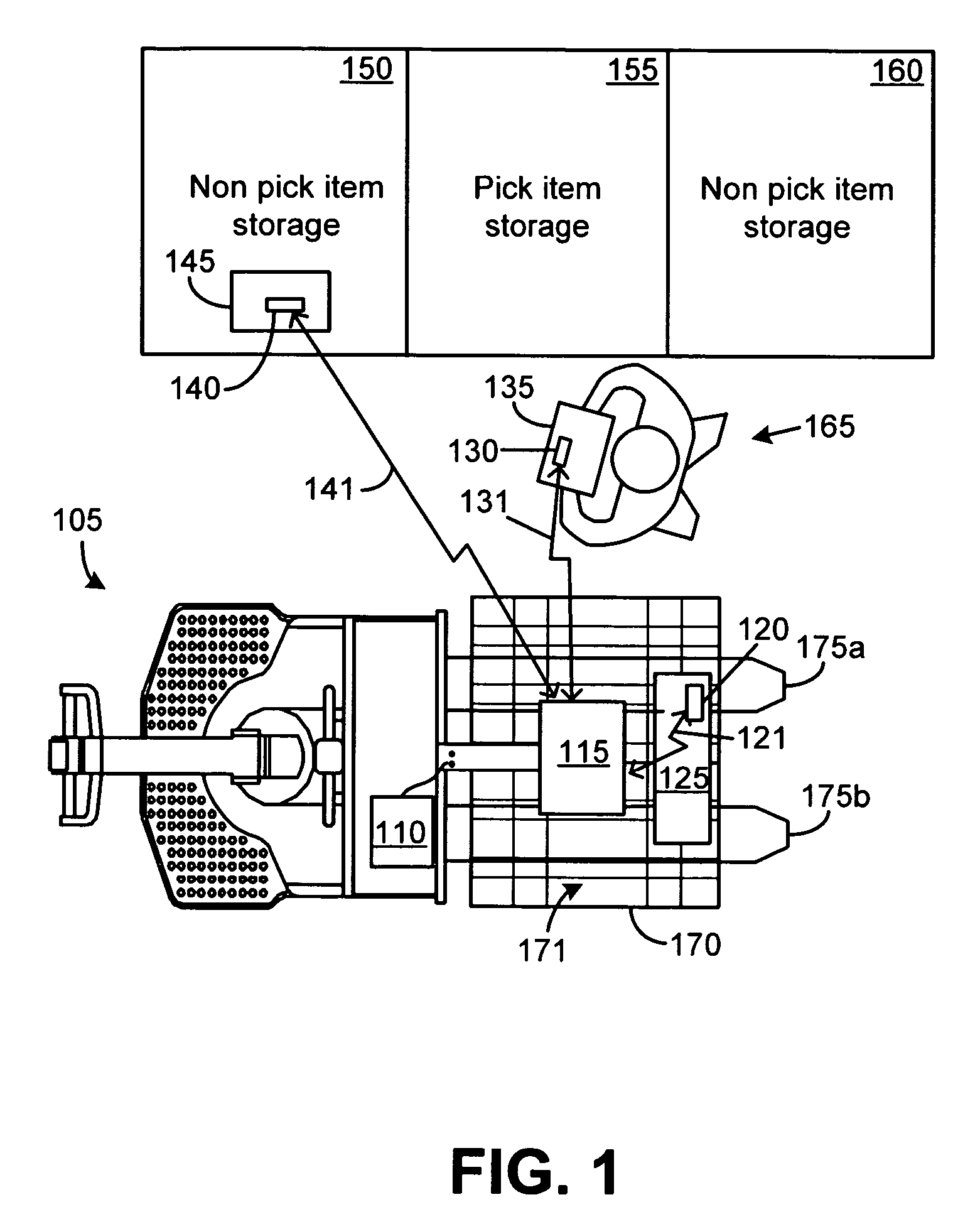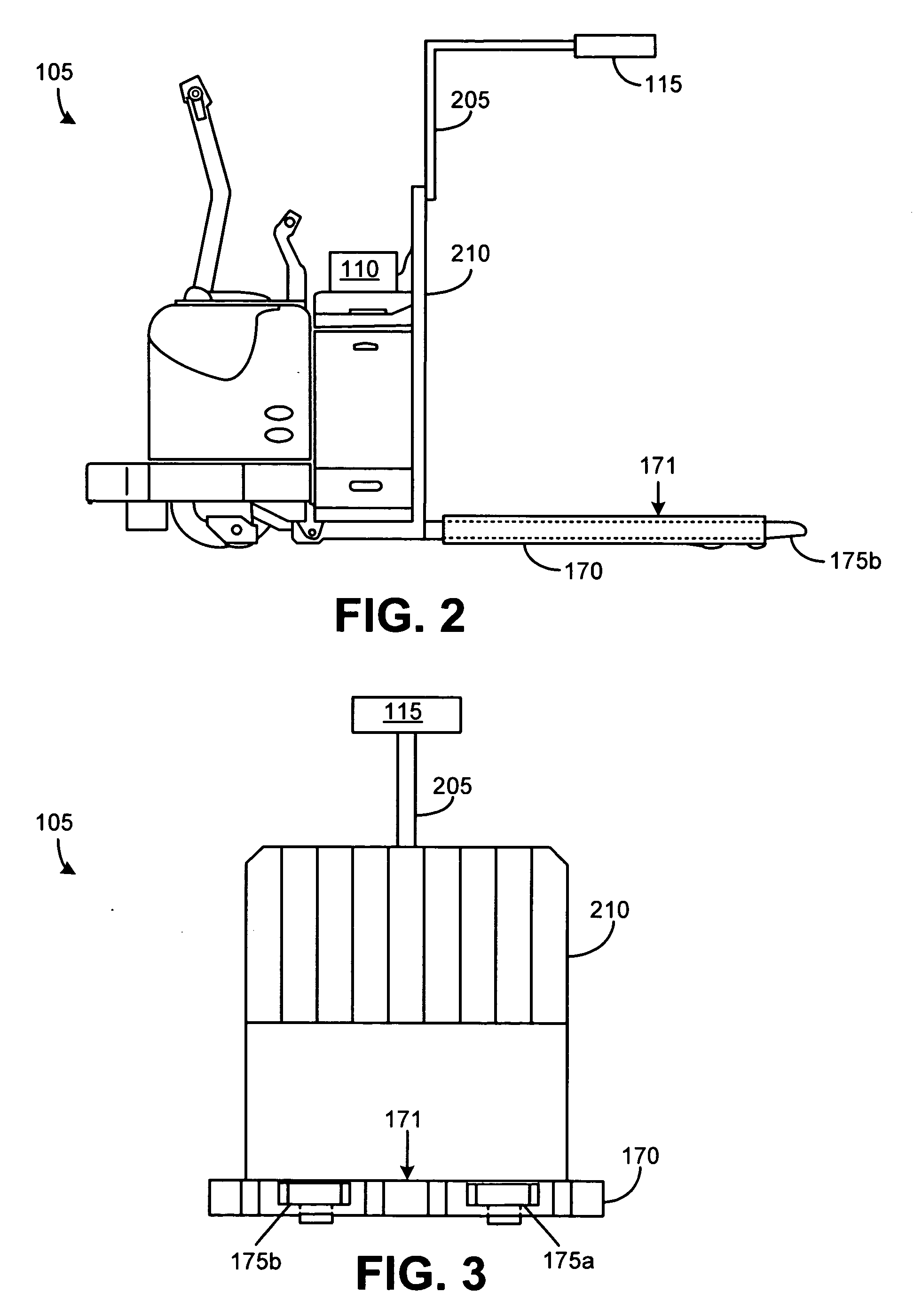Systems and methods for order-picking
a system and method technology, applied in the field of order-picking, can solve the problems of limited success or ineffectiveness solutions suffering from one or more handicaps, and limited success or failure of rfid technology in order-picking applications
- Summary
- Abstract
- Description
- Claims
- Application Information
AI Technical Summary
Benefits of technology
Problems solved by technology
Method used
Image
Examples
Embodiment Construction
[0038] The various embodiments described below in accordance with the invention generally describe alternative features of a radio frequency identification (RFID) system mounted on a picking cart and further describe alternative methods for order picking.
[0039] It will be understood that various terms such as “picking cart,”“ID code,” and “order-picking” that are used in this disclosure should be interpreted in a broad sense and are not intended to be limited by the exemplary embodiments described herein.
[0040] As a general guideline, the term “picking cart” refers to any vehicle that is used to transport picked items. Some non-exhaustive examples of picking carts include a lift truck, a motorized pallet truck, a hand pallet truck, a shopping cart, a trailer, and a flatbed attached to a motorized vehicle.
[0041] The term “ID code,” which is used herein interchangeably with the term “ID data,” is intended to be interpreted as a generic term indicative of various types of identifica...
PUM
 Login to View More
Login to View More Abstract
Description
Claims
Application Information
 Login to View More
Login to View More - Generate Ideas
- Intellectual Property
- Life Sciences
- Materials
- Tech Scout
- Unparalleled Data Quality
- Higher Quality Content
- 60% Fewer Hallucinations
Browse by: Latest US Patents, China's latest patents, Technical Efficacy Thesaurus, Application Domain, Technology Topic, Popular Technical Reports.
© 2025 PatSnap. All rights reserved.Legal|Privacy policy|Modern Slavery Act Transparency Statement|Sitemap|About US| Contact US: help@patsnap.com



